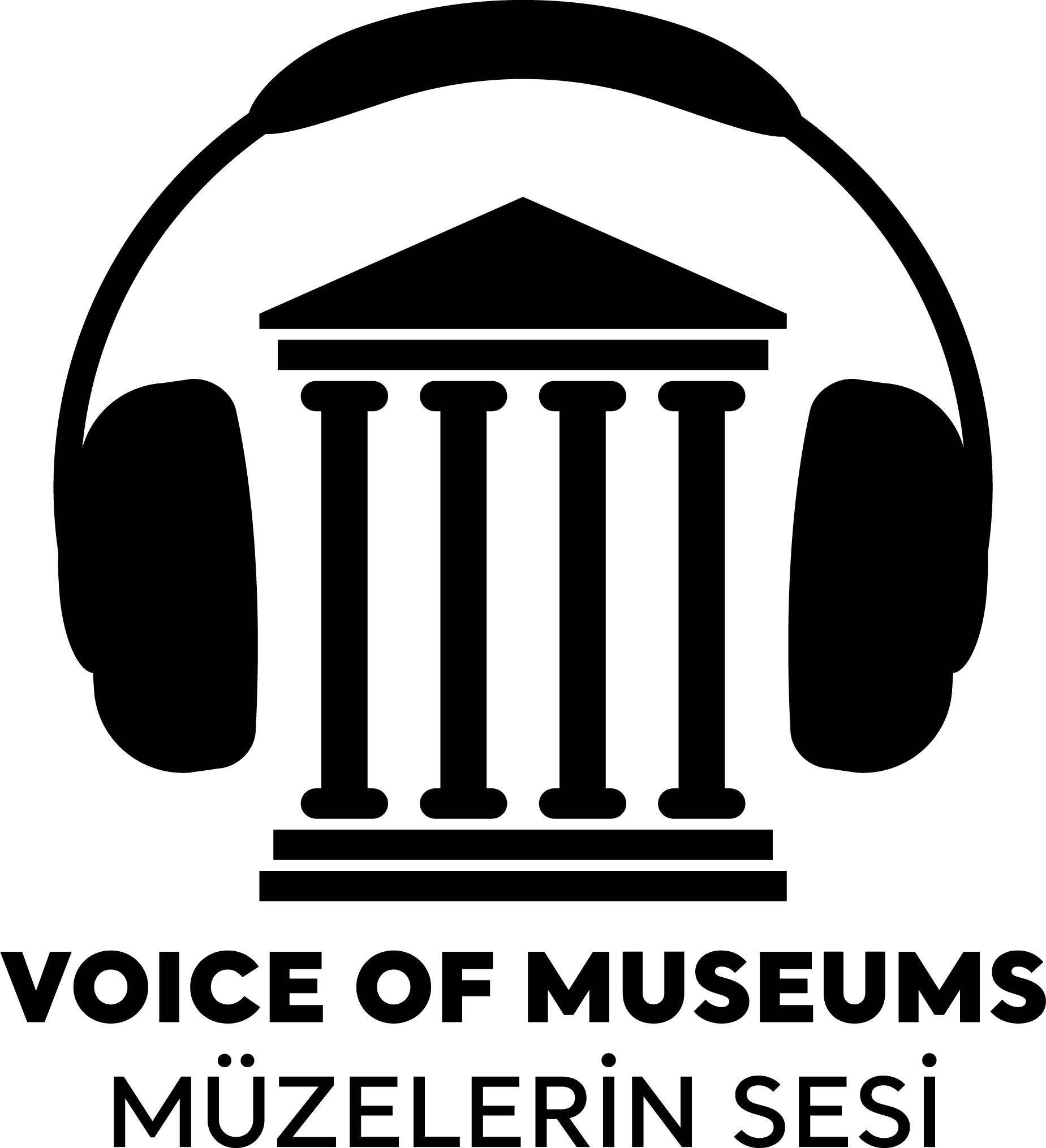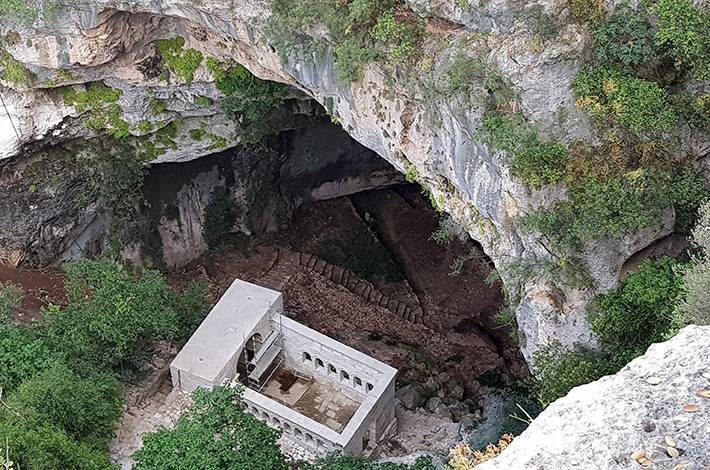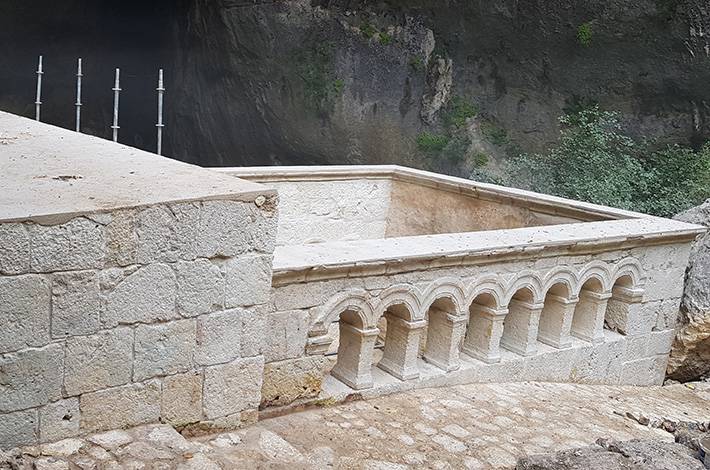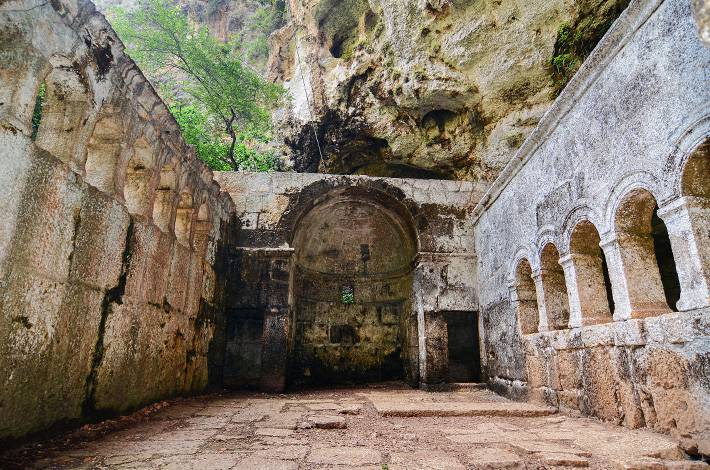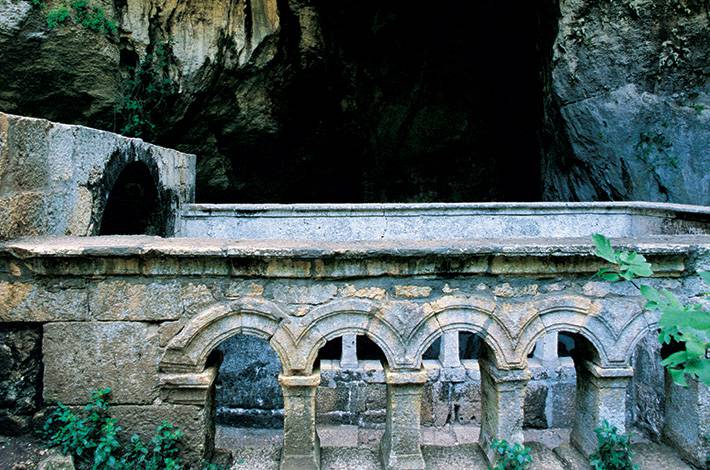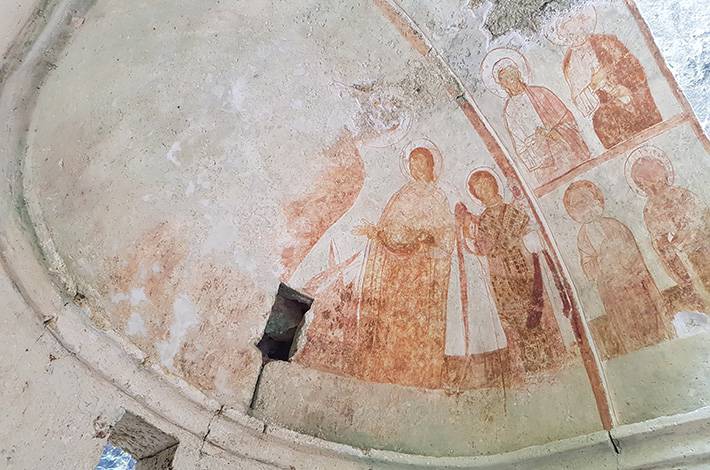The Cennet and Cehennem (Heaven and Hell) sinkholes are situated 25 km from the Silifke district centre, 2 km northwest of the Ancient Narlıkuyu Port, and 5 km west of Korykos (Kızkalesi). These natural formations result from the gradual dissolution of the limestone layer by underground waters, which eventually causes the ceiling structure to collapse and the water to drain away. The Cennet (Heaven) Sinkhole has an opening measuring 250 x 110 metres (820 x 360 ft). At the bottom of the formation towards the south, which is 70 metres in depth, there is a large cave entrance which is 200 metres long with a 135-metre deepest point. At the entrance of the cave, a small rectangular monastery has been constructed using ashlar stonework. The access to the church is by stairs. The bottom of Cennet is accessible by a 450-step staircase. Cehennem (Hell) Sinkhole is located 75 metres north of Cennet Sinkhole. The opening at the summit of the sinkhole measures 75 by 50 metres (210 by 150 feet). As the upper edge of the opening is concave, there is no access to the bottom of Cehennem. It is 128 metres deep. According to Greek mythology, after a fight, Zeus kept Typhon, a monster with over a hundred serpent heads, temporarily in Cehennem before imprisoning him under Mount Etna. The Virgin Mary Monastery is situated at the entrance of the cave in Cennet Sinkhole. Constructed from ashlar stonework, the monastery dates back to the 5th century. The four-line inscription on the entrance gate at the western end of the church indicates that the church was commissioned by a pious individual named Paulus in memory of the Virgin Mary. The apse in the eastern part of the church and the monk chambers on either side of this apse are covered with domes. The dome and inner wall parts of the apse are decorated with frescoes depicting Jesus Christ and his disciples. Temple of Zeus The Temple of Zeus is located on the south side of Cennet Sinkhole. The first phase of the temple is dated to the Hellenistic period. In the north wall of the temple, which was constructed in the Doric order, the names of 130 religious figures who served during the construction were inscribed on stones. The temple was converted into a church during the Christian period. The southern wall of the temple did not survive to the present day.
MUSEUMS NEARBY
MERSİN KANLIDİVANE ARCHAEOLOGICAL SITE
MERSİN SİLİFKE ATATÜRK HOUSE AND ETHNOGRAPHY MUSEUM
MERSİN SİLİFKE AYATEKLA ARCHAEOLOGICAL SITE
MERSİN SİLİFKE MUSEUM
MERSİN SİLİFKE NARLIKUYU MOSAIC MUSEUM
MERSİN SİLİFKE UZUNCABURÇ ARCHAEOLOGICAL SITE
SIDE ANTIQUE THEATRE
